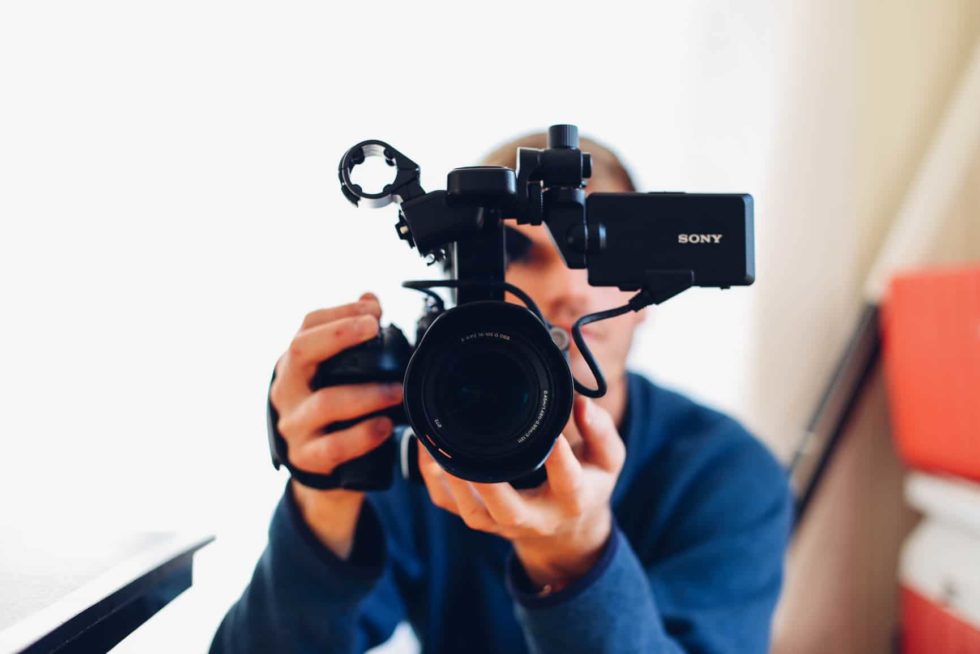With the inbound marketing methodology, creative content always reigns supreme – it’s the glue that holds everything together, and the primary source of meaningful interest in a solid, targeted campaign.
But, long gone are the days when a great website and a radio ad were all that you’d need to grab your prospects attention. Increasingly, content marketers and inbound strategists have to come up with fresh and innovative ways to engage with an insatiably media-hungry audience.
Table of Contents
ToggleVideo Is King in Content Marketing
These days, one of the most results-driven mediums for creative content is video. According to Cisco, video will soon account for upwards of 69% of all consumer internet traffic by 2017.
Online and mobile video have adapted to cover a hybridized approach to content that blends both entertainment and education, the two key requirements of a satisfied audience – simply put, small businesses and brands that don’t engage their target audience with video content really aren’t doing themselves any favors.
Let’s look at some stats:
- YouTube generates billions of online video views per day. The platform reaches more people in the 18-34 and 18-49 year-old demographics than any cable TV network in the US.
- More than half of all YouTube views are viewed on a mobile device
- In terms of advertising, the number of YouTube channels generating 6-figure earnings has increased by 50% year over year
- Videos included on landing pages have been shown to increase conversion rates by up to 80%
- 92% of mobile video consumers share videos with others
- 64% of users are more likely to buy a product after watching a video
- When viewers enjoy video content, it increases brand association by 139%
So what are some up-to-date, best practices for harnessing the power of video content in your inbound marketing campaigns? Let’s answer this question by exploring the two major ways to view video, traditional pre-recorded form, and live online, followed by a closer look at how to integrate video marketing into your business’ digital marketing strategy.
Best Practices & Tips for Using Pre-Recorded Video
Beginners
- For beginners, creating specialized ‘thank-you’ videos from your team to new customers and clients that you connect with.
- Share positive 15-second testimonials from real customers by asking them to tag you in a video post after they’ve used your product or service. This gives you video content that’s easy to share.
- Create animated GIFs that give directions on how to use your product.
- Research and watch vlog (video blog) tutorials to discover new and creative ways that could help your business speak to your desired audience.
Intermediate
- Film a short introduction of the company or brand, outlining your products or services, and the people involved in making your brand great. Edit together a short 1-2 minute version for Facebook, Youtube, and Vimeo platforms, as well as a 15-30 second version of your video for Instagram.
- Record longer product demonstrations for customers as they progress down the sales funnel. Present longer videos when you’ve hooked your targeted prospect, as they’re more likely to watch a longer video.
Advanced
- Turn a few of your upcoming go-to written blog posts into instructional or how-to videos. Use humour where possible. 39% of all videos posted online use humour or comedy to attract viewers.
- Film a full product line demo using a subcontracted videographer. This can help massively! 96% of B2B organizations use video in some form in their marketing strategy, and 73% of them report positive returns on investment.
Best Practices & Tips for Using Live Video
Beginners
- Apps and programs like Meerkat or Periscope can be used to broadcast live to the web from interesting events you’re hosting, or places your business has been invited to take part – like a festival, seminar, etc. Facebook Live also offers a similar alternative that’s dedicated to their social media platform.
- Google Hangout and Skype, can be used a s simple way to thank customers for their patronage, or on special occasions, like the holidays, or a work anniversary for your brand.
Intermediate
Try hosting a Live Q&A session to give the appearance of organization transparency and directly communicate with your growing audience.
Use the same method to interview an industry leader or a big mover-and-shaker who is relevant to your audience. Don’t be afraid to cross collaborate with other related industries.
Advanced
Film a live day around the office, following around the founder or a lively PR rep for a unique, in-depth and behind-the-scenes online event.
Integrating Video into Your Content Marketing Strategy
- Balancing video content within your marketing mix is a strategic and effective way of increasing brand awareness and conversion rates leading to sales. Drip-Feed style campaigns that are automatically sent out based on specific user actions or specific timelines are invaluable. This style of video content sharing helps businesses and brands to stay in touch with their audience in an engaging and captivating way.
- Embrace the idea of including your existing audience to help create content with you! Customer stories are great ways to integrate video into an otherwise dull style of written testimony. Real-life customers evoke positive emotion from your prospects and helps to develop a sense of trust with new viewers. These videos can be custom-tailored to your website, and social media platforms like Facebook, Vimeo, and Instagram. Aim to keep them between 1 and 5 minutes long, depending on where your prospect is in your sales funnel, and along their buyer’s journey.
- User-generated video is a powerful tool where customers, users, or brand ambassadors of your business voluntarily submit video content that endorses and promotes your product. Think about GoPro, who regularly shares beautifully polished videos of extreme athletes, and interesting people using their product to capture their life’s memories – this creative style of innovative video sharing helps to nurture people’s feelings about your brand as they move throughout your sales funnel.
- Video offers a new vision for prospective clients and customers to your small business or brand. What it does better than any other creative medium out there, is humanize and create strong emotions that help to solidify the viewers’ interest in who you are, and what you do.
As digital marketing becomes even more personalized, the power of video is second to none in helping your ideal audience become loyal, valued customers.











